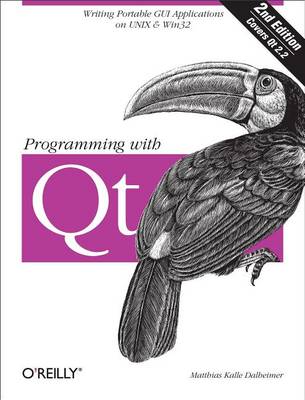Qt is a C++ class library for writing GUI applications that run on UNIX, Windows 95/98, and Windows NT platforms. Qt is much easier to use than the standard Motif toolkit for UNIX systems, but at the same time Qt emulates the look-and-feel of Motif. Best of all, after you have written an application with Qt, all you have to do is recompile it to have a version that works on Windows systems. Qt also emulates the look-and-feel of Windows, so you can provide all of your users with native-looking interfaces. Platform independence is not the only benefit of Qt. Qt uses an ingenious signal/slot mechanism for connecting user interaction with program functionality, providing an excellent framework for component-based programming. Graphical rendering in Qt is highly optimized due to its use of effective caching mechanisms -- rendering in Qt is often faster than with the similar native API. In addition to user interface classes, Qt features portable support for file system access, working with date and time values, and network programming. With Qt, you'll find that you need to write very little, if any, platform-dependent code because Qt already has what you need.
Qt is popular with open-source and Linux developers because it can be used for free on UNIX systems for this type of development. For commercial development, you need a license for Qt, which is available from Troll Tech, the developers of Qt. In addition to open-source development, Qt is being used by several major companies and government and international agencies. While programming with Qt is straightforward and feels natural once you get the hang of it, the learning curve can be steep. Qt comes with excellent reference documentation, but beginners often find the included tutorial is not enough to really get started with Qt. That is where this book steps in. Programming with Qt guides you through the steps of writing a Qt application by showing you how to write a simple paint application. It also helps deepen your understanding of the topics with exercises and fully worked out answers. The book presents all of the GUI elements in Qt, along with advice about when and how to use them, so that you can make full use of the toolkit.
There's also lots of information for seasoned Qt programmers, including material on advanced 2D transformations, drag-and-drop, and writing custom image file filters. Programming with Qt helps you get the most out of Qt. With it, you'll learn to take full advantage of this powerful, easy-to-use, cross-platform toolkit.
- ISBN10 1449391605
- ISBN13 9781449391607
- Publish Date 22 January 2002 (first published 11 May 1999)
- Publish Status Active
- Imprint O'Reilly Media
- Edition 2nd ed.
- Format eBook
- Pages 522
- Language English
